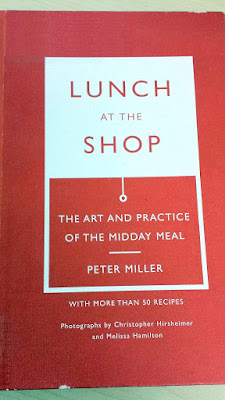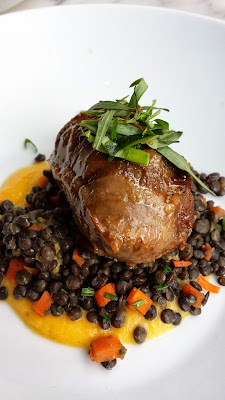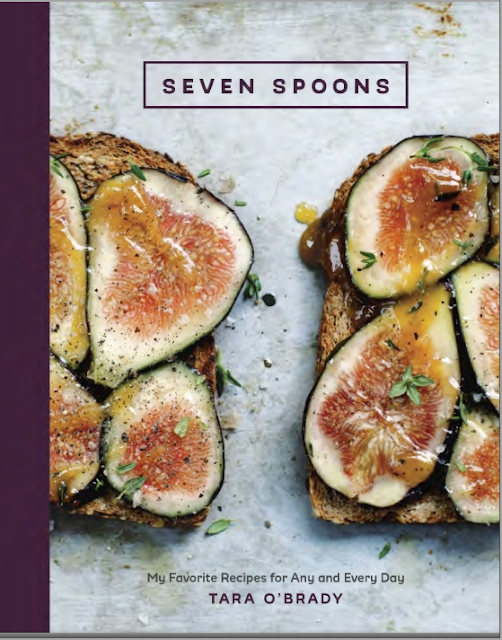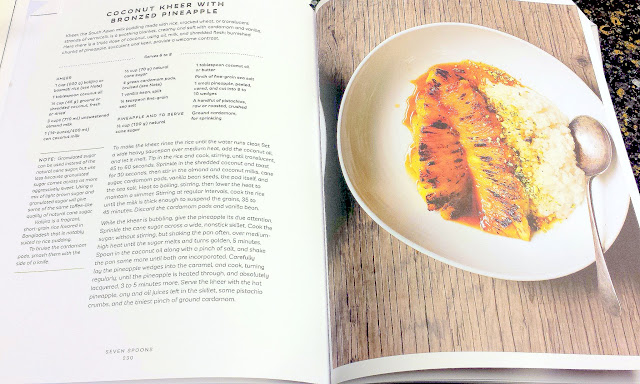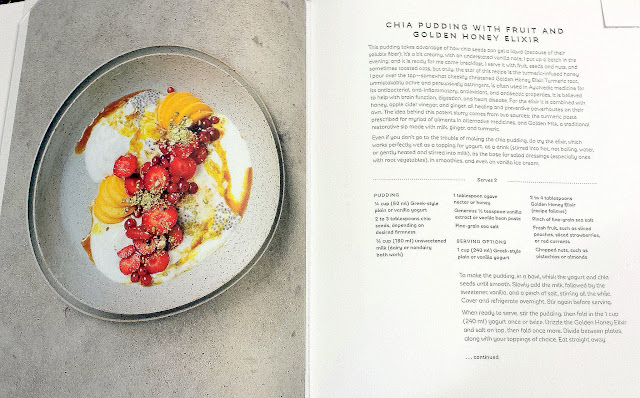A while ago, I was finally able to pick up the book Relish: My Life in the Kitchen: Lucy Knisley from the Multnomah County Library, as suggested by my book club with a focus on food, The Kitchen Reader. This book is more unique of the food memoirs we have read because it is a graphic novel. Yes, that means every page was picture cartoons just like a super thick comic book!

Published in April 2013, this book is about 12 chapters detailing various memories in author Lucy’s life so far and always alongside her vivid food memories. Each chapter also includes a recipe which is illustrated in showing the ingredients and steps. Each chapter is only a handful of pages although each page is often chock full of drawn details in a panel here or there.
- The Kid In the Kitchen – how Lucy’s childhood from birth has been surrounded by food thanks to her foodie family. Recipe: The Dent Family Patented Marinated Lamb (from her maternal grandfather).
- Country House City Mouse – her transition as a seven year old to living in the country from Manhattan to upstate New York when her mother divorced Recipe: Mom’s Pesto
- Tough Cookie – how cookies were the first thing she made and are a comfort Recipe: The Best Chocolate Chip Cookies

- Junk – how despite her parents gourmet view, she loves and supports indulging in junk food Recipe: Carbonara
- Getting Ours – A vacation to Mexico with her mom, mom’s best friend, and childhood friend Drew and how they both grew up in different ways during that trip and also discovered so much local food Recipe: Huevos Rancheros

- The Craver – how Lucy and her mother both have cravings Recipe: The Way Mom Makes Mushrooms (sauteed!)
- On Foreign Soy- how traveling to Japan with her mother opened her eyes through food Recipe: How To Make Sushi Rolls
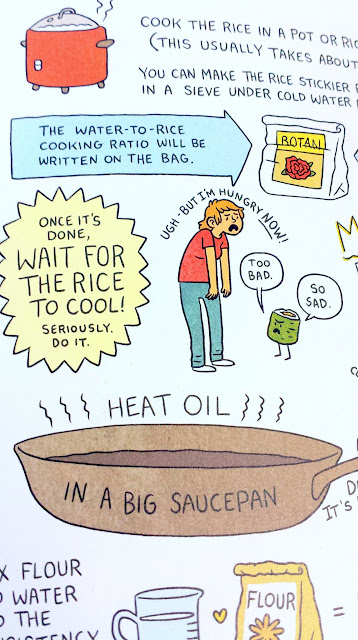
- The Apple Doesn’t Fall Far From the Cheese – How her mother worked with cheese and other food jobs and how it influenced Lucy Recipe: Cheese Cheat Sheet
- Recapturing Croissants – Lucy’s college summer trip and how a croissant in Venice made a strong memory Recipe: Sangria (because making croissants is too much work – and she admits she gets them premade from the can!)

- Dining with Zeus and Demeter – the difference between her relationship with her father and food and her mother and food Recipe: Summer Pickle Recipe
- When Bad Food Happens to Good People – retelling of the worst thing she ever ate but how the food itself is only part of the experience Recipe: Shepard (Fairey) Pie, a vegetarian shepherds’ pie
- Molecular Goodbye – Lucy says goodbye to Chicago where she went to school and stayed and returns home to New York, but not before observing the kitchens of Alinea Recipe: ok, none here but in the afterward she includes photos of her family from her research, and in the forward she has a illustrated recipe for Spice Tea
My general review of Relish: My Life in the Kitchen is that I enjoyed the graphic novel. Similar to me, Lucy has a great love of food but in a casual, cheerful way that appreciates great food while also being very open and humorous in sharing details of her memories and being able to see the perspective of others in her story. Lucy, and the people she includes in her stories, all seem charming and she clearly has great affection for not only food, but everyone who has helped contribute to all her life experiences.
Each chapter is short, like a story being told at a table during a shared meal, so you can digest a couple in a sitting making this a great choice to read while commuting. Though it might make you crave certain foods with her vivid descriptions and enthusiasm in her book.

Lucy has several other graphic novels available:
- French Milk focuses on a trip in her early 20s with her mother to France published October 2008
- An Age of License, a travelogue of eating and cats as Lucy travels was published Sept 2014
- Displacement is her most recent book from Feb 2015 and covers traveling with her grandmother on a cruise
- An upcoming book to be published early 2016 is Something New bringing together her fun and charming perspective, love of food, and wedding planning.
If you are interested in the online book club the Kitchen Reader, the gist of our casual club is there is a new book selected for every month, each book is related to food, and members write a review on their blog during the last week of that month. The November book is the classic The Art of Simple Food by Alice Waters.
Would you read a foodie graphic novel memoir? What is one of your strongest food memories?






